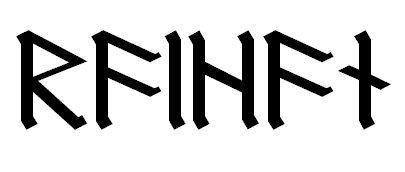In 1929 an RAF crew took aerial shots of the site of the old Roman town of Venta Icenorum around the church of Caistor St Edmund near Norwich. The photographs revealed an extensive road network and soon the archaeologists moved in. During their excavations they came across a large early Anglo-Saxon cemetery with burials dating from the 5th century.

In the cemetery they found some cremation urns as well as pots with possessions in. One of these was full of bones – but they were not human remains. Most were sheep knuckle bones and probably dice or other game pieces. But amongst them was a bone that was and still is of historical importance.
It was a bone from a Roe deer and upon it there were runic inscriptions:
The runes were old German/ old english runes and spelt this word:
 Which means Raihan. What is Raihan? Well the ‘an’ in old German meant “belonging to or from” and the Raih is believed to be a very early version of the word ROE. So this inscription which has been dated to circa 420 AD means “from a roe”.
Which means Raihan. What is Raihan? Well the ‘an’ in old German meant “belonging to or from” and the Raih is believed to be a very early version of the word ROE. So this inscription which has been dated to circa 420 AD means “from a roe”.
It is not uncomon in the Saxon period to find similar bones from other animals with writing telling us which beast it is from.
So what we have here are the possessions of a man or woman from the VERY first years of Anglo-Saxon settlement of East Anglia buried in a cemetery that would have been very new within or close to a decaying Roman town. What we also have is the VERY FIRST word written in what would one day become England in the language which would one day be called English.
What we see here are the scrapings of one of the first of the mercenaries who crossed the north sea on hearing the call from the Britons for fighters to help protect Britannia from the Picts and Irish. He and thousands like him stayed on to carve out a nation.
There is more on this word an 99 other ones that form part of our history in The Story of English in 100 words by David Crystal. Its a fascinating book.



Related Articles
No user responded in this post